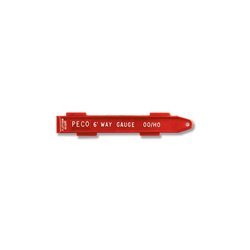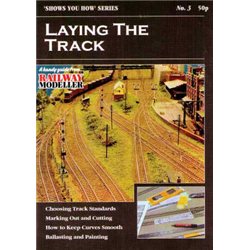There are a number of different options for attaching figures such as a horse and rider to a layout. Perhaps the...
No products
Product successfully added to your shopping cart
There are 0 items in your cart. There is 1 item in your cart.
Search Tips
How to use a track gauge like Peco SL-36 and SL-336?
Track gauges of this type don't look like much when you take them out of the box and it's often hard to see how to use them as they don't come with any instructions, but appearances can deceive and this little tool is actually quite brilliant!
A way-gauge is used to allow modellers to lay their tracks a set/uniform distance apart. This is achieved by slotting one of the little plastic tabs that stick out from the side of the way-gauge neatly between the rails of a piece of track. The other tab sticking out further along the shaft of the gauge is to slot between the rails of a parallel track. Once those pieces of track have been secured in place, you can slide the gauge along the track to the next fixing point and repeat the process.
You will notice that there are tabs on both sides of the way-gauge and that they are set at different distances apart. The tabs on the bottom of the gauge that are closer together are for setting Peco Streamline track, using this measurement will give you a distance of 51mm between the track centres (in 00 gauge). That distance when scaled up would equate to a real life distance of just over 3.8m which is the most prototypical closely resembling a 3.5m standard. It should be noted however that the distance between tracks in real life does vary depending on where the track is laid, when the track was laid, radius and the purpose of the track.
The other measurement on the way-gauge (with the tabs spaced further apart) is used for laying Setrack and will give a distance of 67mm between track centres giving a scaled up representation of 5.1m. Although such larger track spacing does occur on occasion in real life, the decision to space Setrack in this way has more to do with the functionality of the model and the space needed for tighter radius curves or point-work than duplicating real life.
Another feature of the way-gauge is the little indicator on the square end for measuring your platform height. This is used by resting one of the gauge's tabs on top of your rails, with the way-gauge in place your platform top should come to the same height as the top of the way-gauge.
Way-gauges are available for 00 and N gauge tracks. They may not look like much but they certainly produce big effects!
Click here to receive the tips weekly in your mailbox. You can unsubscribe at any time.










